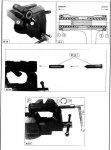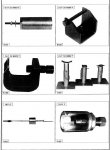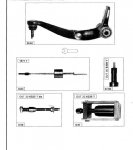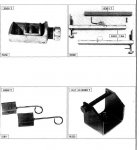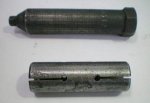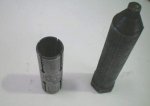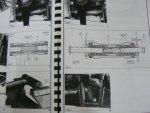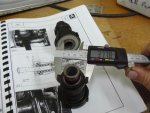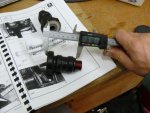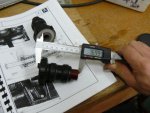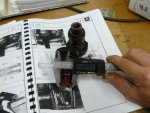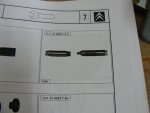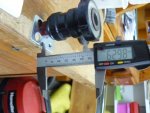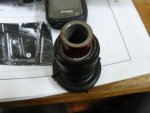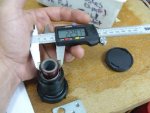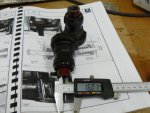Hi Guys,
does anyone have a lower arm bush special tool that could measure up ?? I'd like to make one so I can get the lower arms into my car and pre-loaded correctly. The old girl has start wandering a little lately. I'm going to try and pre-load the lower arms perfectly.... It feels weird though (it seems to slightly move suddenly when there is a camber under one wheel). I'm wondering if it's developing a cracked steering rack mounting frame like Andys old car did ?? hmmm.....
I've never had success getting those lower arm bushes in with any sort of precision and it drives me bloody insane (I always end up having to leave out one of the washers).
Actually.... I bet I didn't tighten the adjuster between the rack on column a couple of year back when I set the center position....
How do others hold the lower arm bushes in the "compressed" state while they refit the arms ??
seeya
Shane L.
does anyone have a lower arm bush special tool that could measure up ?? I'd like to make one so I can get the lower arms into my car and pre-loaded correctly. The old girl has start wandering a little lately. I'm going to try and pre-load the lower arms perfectly.... It feels weird though (it seems to slightly move suddenly when there is a camber under one wheel). I'm wondering if it's developing a cracked steering rack mounting frame like Andys old car did ?? hmmm.....
I've never had success getting those lower arm bushes in with any sort of precision and it drives me bloody insane (I always end up having to leave out one of the washers).
Actually.... I bet I didn't tighten the adjuster between the rack on column a couple of year back when I set the center position....
How do others hold the lower arm bushes in the "compressed" state while they refit the arms ??
seeya
Shane L.

